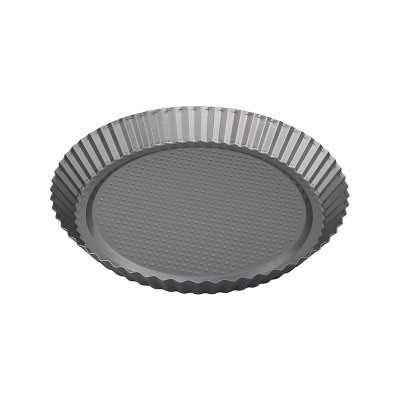Baking enthusiasts often recognize that the type of bakeware can significantly influence the final result of their recipes. Among various materials, carbon steel muffin pans have gained attention for their ability to promote consistent baking results. Unlike other materials, carbon steel offers unique properties that affect heat conduction, durability, and overall performance in the kitchen. Understanding how carbon steel pans distribute heat can help home bakers and professional kitchens achieve evenly baked muffins and other small treats.

The Characteristics of Carbon Steel Muffin Pans
Carbon steel is a durable material known for its resilience and relatively lightweight construction. Unlike aluminum, which is softer and prone to warping under high temperatures, carbon steel provides a stable structure that can handle repeated use. Many loaf pan factories and kitchenware suppliers offer carbon steel muffin pans designed to resist rust and maintain their shape over time. The surface of carbon steel pans is often treated with a nonstick coating or seasoned naturally, which can reduce the need for additional greasing while promoting even browning.
Another notable characteristic is the pan’s ability to respond quickly to temperature changes. Carbon steel heats up faster than some other materials, which means muffins begin to cook promptly once the pan is placed in the oven. This quick response is particularly useful for recipes that require precise baking times, helping to avoid undercooked centers or overbaked edges.
Heat Distribution and Its Impact on Baking
One of the main reasons bakers prefer carbon steel muffin pans is the material’s heat distribution properties. Carbon steel transfers heat efficiently across the entire surface, allowing muffins to bake more evenly compared to pans made from materials with uneven thermal conductivity. When the pan is preheated properly, each muffin cavity receives a consistent amount of heat, reducing the chances of uneven rising or dense centers.
Even heat distribution also plays a role in browning and texture. Muffins baked in a carbon steel pan tend to develop uniform golden-brown edges and a soft, moist interior. The efficient conduction of heat helps maintain a balanced environment inside the oven, preventing hot spots that can cause some muffins to bake faster than others. This can be especially important in commercial baking settings, where multiple pans are used simultaneously and consistency is crucial.
Choosing the Right Pan Size and Shape
While material plays a significant role, the size and shape of the muffin pan also influence baking results. Carbon steel muffin pans are available in a range of configurations, from mini muffin pans to standard 12-cup designs. Selecting the right size ensures that muffins cook evenly, as smaller or irregularly shaped pans can cause uneven heat distribution if the cavities are too shallow or deep.
Loaf pan factories that produce carbon steel bakeware often focus on uniform cavity design and thickness to enhance heat conduction. For home bakers, paying attention to these details can make a noticeable difference in the final outcome. Additionally, using standard pans that fit comfortably within the oven allows for proper air circulation, further contributing to consistent baking.
Care and Maintenance for Longevity
Carbon steel muffin pans require some care to maintain their heat conduction qualities and prevent damage. Hand washing is generally recommended, especially for pans with nonstick coatings. Avoid using abrasive scrubbers, which can wear down the surface over time. After cleaning, drying the pan thoroughly helps prevent rust formation, particularly for uncoated or lightly seasoned pans.
Occasionally, a light coating of vegetable oil can be applied to the surface of the pan to maintain seasoning and further enhance nonstick properties. By following simple maintenance practices, a carbon steel muffin pan can deliver reliable performance for years, providing evenly baked muffins with consistent results.
Understanding the heat distribution properties of a carbon steel muffin pan can help bakers achieve even baking and desirable textures. Its efficient conduction, durability, and quick response to temperature make it a practical choice for both home and professional kitchens. By selecting the right size, maintaining proper care, and appreciating how carbon steel interacts with heat, bakers can enjoy muffins with consistent browning, moist interiors, and a pleasant presentation every time.
Whether experimenting with new recipes or refining classic favorites, the carbon steel muffin pan remains a versatile and reliable tool that contributes to the overall baking experience.

 English
English 中文简体
中文简体 Deutsch
Deutsch